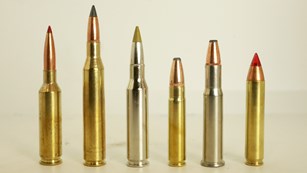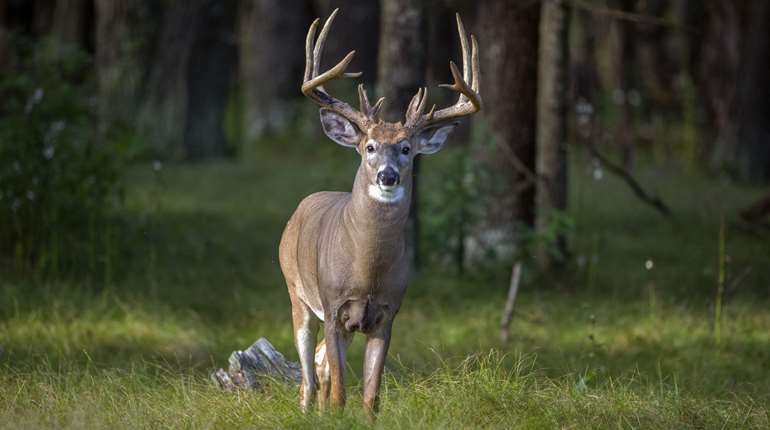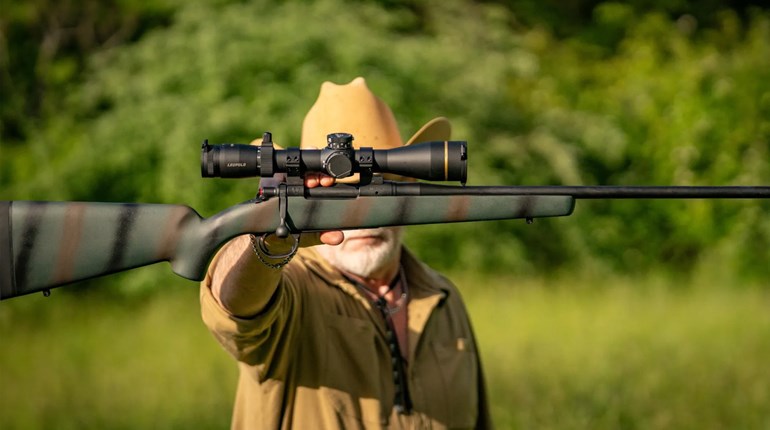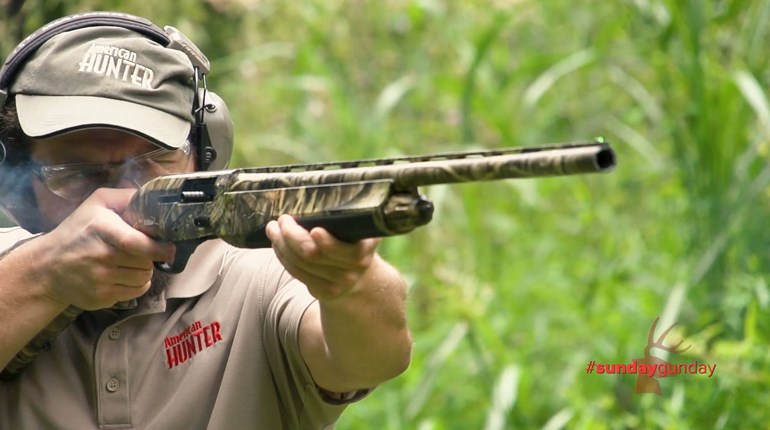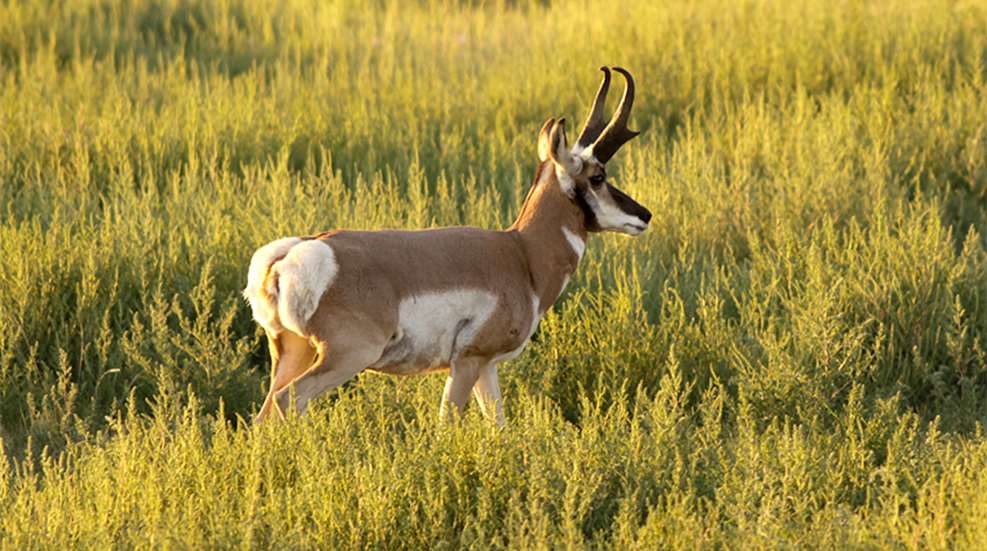
Pronghorns live in a big backdrop and assert behavior that benefits numerous hunting styles. If you waver on hunting styles consider a variable approach to your next hunt. Unlike most big game, pronghorns move about all day with a schedule you can target.

6 a.m.–10 a.m.
This is prime time for pronghorns to water. They may hit a waterhole at any time throughout the day, but they tend not to roam wildly at night. Shooting light should arrive by 6 a.m., but you’ll want to access your ground blind in the dark to avoid detection. Be alert. It’s not uncommon for a rut-thirsty buck to head straight to a favored waterhole immediately at daybreak. Far off herds may take longer to arrive. Even when within sight of a water target, their observational nature prods them to approach cautiously as they survey for danger.
The good news is that they don’t fear ground blinds, especially those that have been out for several days. Plus, they tend to drink a lot at one time. They require 3 to 4 quarts daily on warm, fall days. Once they commit to drink you’ll have ample time to re-range the distance and make a comfortable shot from your bow blind or a rifle perch nearby.
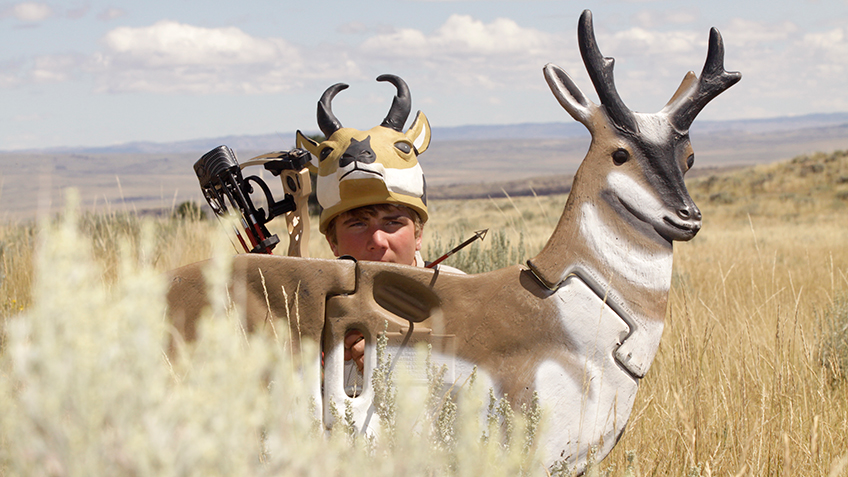
10 a.m.–2 p.m.
If it’s bow season, the midmorning to midafternoon window is perfect for decoying. Rifle hunters should stay at the water or skip to the next schedule strategy to avoid being someone’s target. Decoying works anytime due to a pronghorn’s curious nature, but for heart-stopping action decoy during the September rut.
You can stake a 3-D decoy within shooting distance of your blind, but stalking close to a herd and deploying a 2-D model of a young buck has the spark to send the herd buck charging your way. For best results slowly raise the decoy from a downwind location no closer than 150 yards. If you stake it too close it could spook pronghorns. Hide behind it and get ready. Any buck could charge, so range fast and draw the bow horizontally while slowly rising to shoot. Wearing a Be The Decoy hat and tan shirt has the ability to stall a responding pronghorn for a better shot.
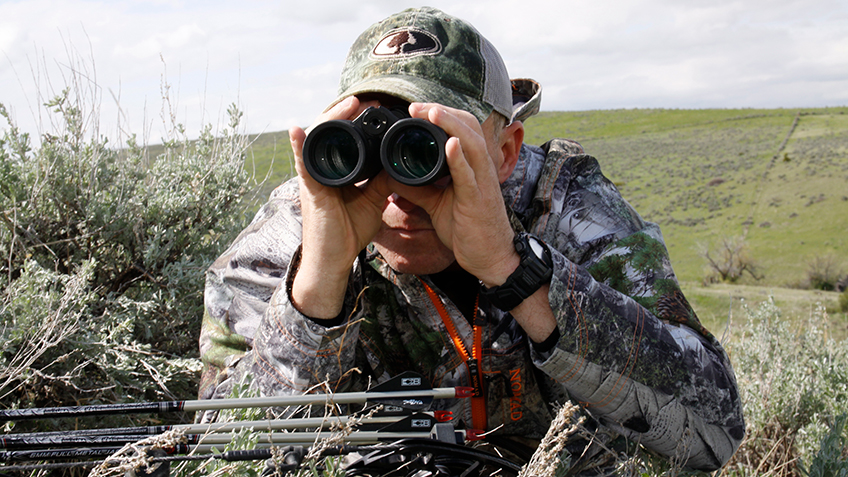
2 p.m.–6 p.m.
From midafternoon until the dinner hour, consider utilizing a spot-and-stalk approach. After filling up on water, browsing and breeding, pronghorns may bed during the afternoon heat long enough for you to stalk a stationary target. Equip yourself with a quality binocular and scan the horizon. Once you locate a contender, mark the position of the herd and navigate to a downwind position. During the stalk you need to stay hidden. A herd could include a dozen or more animals. That’s 24 Hubble telescopes or more looking for danger between catnaps. When you feel you’re in the zone, take every precaution while peering for confirmation. When the buck turns his head completely away, rise slowly and draw, but shoot fast.
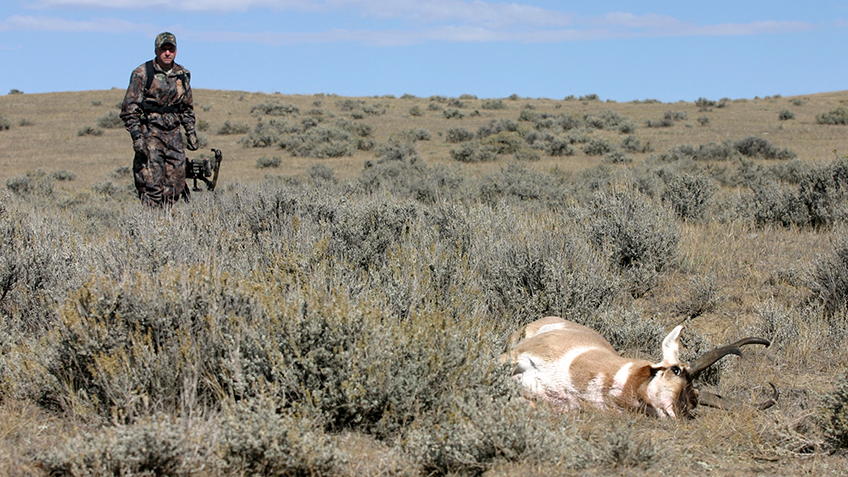
After 6 p.m.
For me, the evening hours are a time to scout on the way back to camp, regroup and relax. But if you are on limited time you can continue the stalk or even return to your blind for the possibility of a late-night drinker. Shooting light ends by 8:30 p.m. Get some rest. Dawn will signal the start to another day in the grandeur of pronghorn country and all options are again on the table for this American original.




